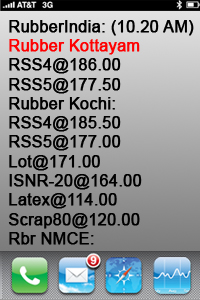(July 14 – July 18, 2025)
Rubber India

The global rubber futures market exhibited an upward trend this week, with significant gains across major exchanges. This movement was primarily driven by fresh speculative buying, short covering, and adverse weather conditions impacting key rubber-producing regions.
Key Market Indicators
Price Movements:
OSE Rubber: Increased by 3.7%.
SHFE Rubber: Rose 3.2%.
INE Rubber: Increased by 2.6%.
SICOM Rubber: Up by 2.1%.
Market Drivers
Weather Conditions:
Tropical Storm Wipha has significantly impacted rubber production in Thailand, Vietnam, and southern China, with forecasts indicating continued heavy rainfall from July 19 to 24. This disruption is likely to limit supply, supporting price increases.
Demand Dynamics:
China’s Vehicle Sales: Total vehicle sales surged by 218,145 units or 8.1% month-over-month in June, reaching 2,904,482 units. This increase in sales is expected to drive demand for natural rubber, particularly in tire manufacturing.
Crude Oil Prices:
Stable crude oil prices, closing at USD 67.34 per barrel, have provided a supportive backdrop for rubber prices, as rubber is often linked to oil prices due to its use in synthetic rubber production.
Market Sentiment
Improvement in Market Sentiment: The recent price breakout above key resistance levels has improved sentiment, with traders showing increased interest.
Profit-Taking Risk: The overbought status may lead to short-term corrections, especially if economic data disappoints.
Forecast for the Coming Week
Expected Price Range
Trading Range: Anticipated prices for the week are projected between 320.0 and 345.0.
Factors to Monitor
Weather Developments: Continued adverse weather could exacerbate supply constraints, impacting prices further.
Economic Indicators:
China: Monitor for any updates on vehicle sales and manufacturing PMI, which could influence demand forecasts.
U.S. Economic Data: Pay attention to inflation reports and employment data that may affect market sentiment.
Geopolitical Factors:
Watch for any changes in U.S.-China trade relations, particularly regarding tariffs that could impact rubber imports and exports.
Conclusion
The rubber market is positioned for potential gains driven by strong demand and supply disruptions due to weather conditions. However, traders should remain vigilant about market corrections and external economic factors that could affect overall stability. Continued monitoring of both domestic and global economic indicators will be crucial in navigating the upcoming week’s trading landscape.









